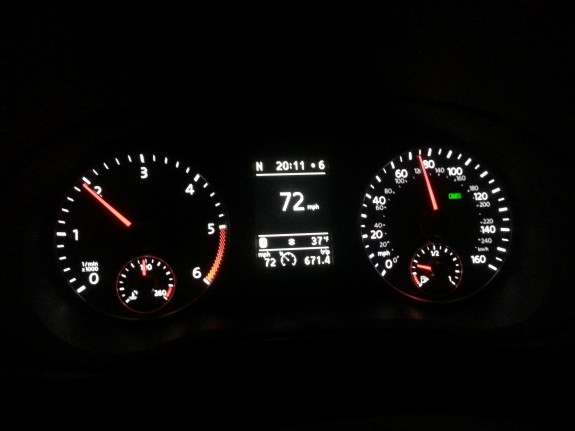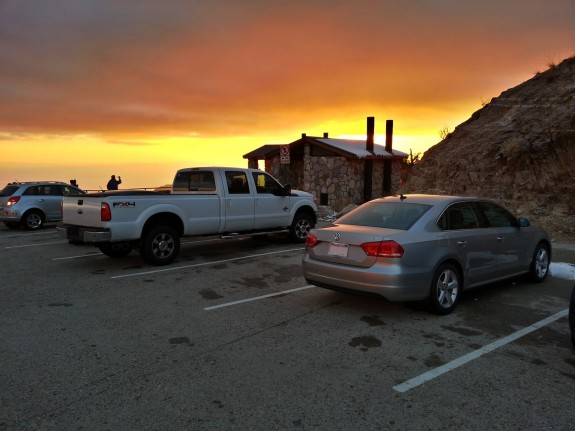Long-Term Update: 2013 Volkswagen Passat TDI SE 6MT
Date: 1/6/2014
Mileage: 10,038 mi
Avg. Fuel Economy (since last update): 46.4 mpg
Avg. Fuel Economy (lifetime): 46.3 mpg
Our long-term Passat has just returned from its first scheduled service at 10K. This service was on the house, thanks to VW’s Carefree Maintenance program. Consisting of an oil and filter change, refilling the AdBlue additive, some inspections, and a tire rotation, it should have been a quick and simple job. Unfortunately, I also needed them to check out a few other things, including low coolant level, some weird trim pieces, and a noisy clutch pedal. The cooling system tested fine, and the clutch pedal was deemed “normal.” I’m not sure I agree that a modern sedan with a price tag approaching $30k should be allowed to make such uncouth noises. Nonetheless, it seems others have the same issue and nobody has successfully fixed it yet – I can deal with noises as long as they won’t leave me stranded.
The last time we updated you on the Passat, we mentioned that it was a great vehicle for long road trips. To test that theory, we jammed in a long trip over Christmas, with 3-4 occupants spending 2600 miles worth of quality time with Passat in the span of just 9 days. First though, I decided to get some mud flaps for the car. The Passat is odd in that the bottom half of the tires stick out beyond the body lines. Thus, all types of dirt and grime are thrown up onto the paint. VW knows this, and wants over $100 for a set of 4 mud flaps. I decided I knew better, and bought a set from China for a mere $20. Of course, they turned out to be complete junk, fitting horribly and requiring me to drill into my shiny new panels to install them. Instead, I bought a few plastic trash cans and cut my own mud flaps. They aren’t the prettiest, but they sure are functional, and I can customize them to be as big as I want/need.
We got relatively poor mileage on the trip, averaging “only” 46.4 mpg. We know the car can do better, but when averaging almost 300 miles a day, 75mph vs 55mph makes a huge time difference. While trapped inside the car for long stretches, we noted that anything above 70mph causes massive drops in fuel economy, all the way down t0 the sub-40 mpg region at 80mph. Although the interior is generally hushed at lower speeds, this trip’s high speeds has brought out wind noise around the driver’s side A-pillar. This became readily apparent when I let Jerry drive for a stretch while I climbed into the passenger seat for a nap. We were both stunned at the audible difference between the two sides – it was night and day. Finally, all my passengers complained about the seats. One said the seats were too firm (I agree, but I think it’s a nod towards durability), and two others said the rear seat back was too vertical for their tastes (I disagree).

To warn drivers of possible ice, the display gets extra bright, pops up a snowflake symbol, and chimes when the temp drops to near freezing levels.
That’s about it for the complaints though. The effortless torque from the common-rail turbo diesel is simply amazing, and the seat heaters were much appreciated on the cold desert mornings. The large trunk swallowed all of our gear with no complaints, and the suspension never jarred its dozing occupants. The good fuel economy and large fuel tank meant that my passengers had to control their bodily functions for longer than they would have preferred. Even as the car’s computer gently dinged and blinked displays to remind us of possible ice on the road (based on outside temperature), the engine always started quickly on the first try, with no smoke and no drama.



